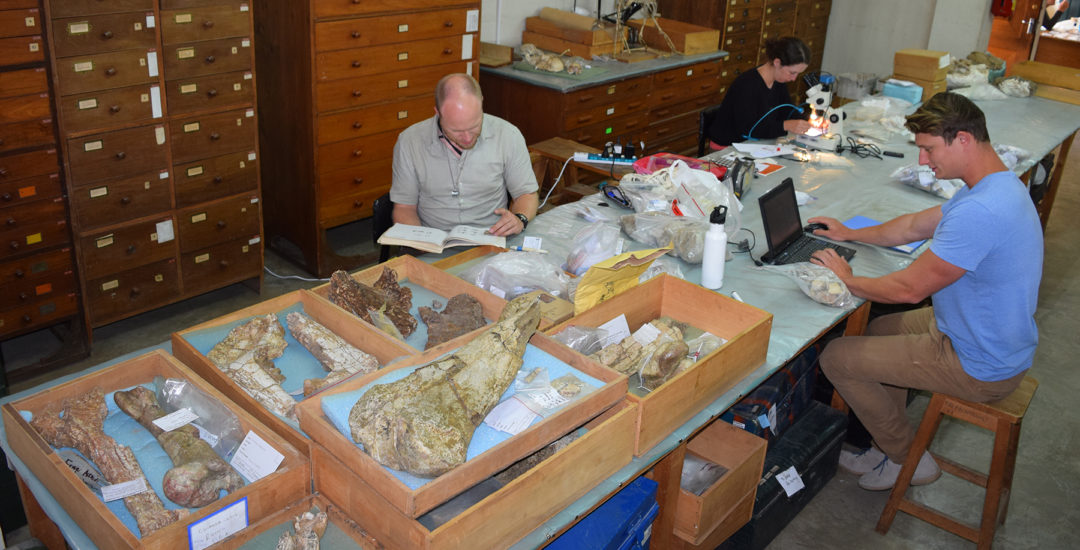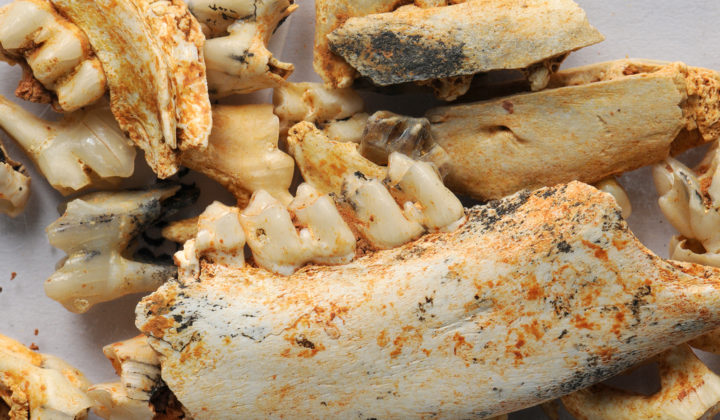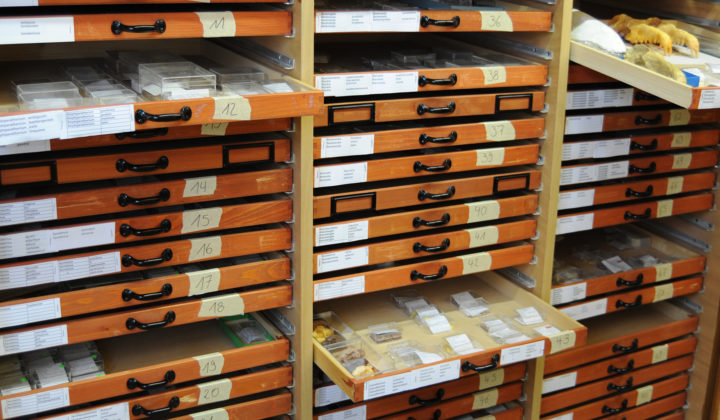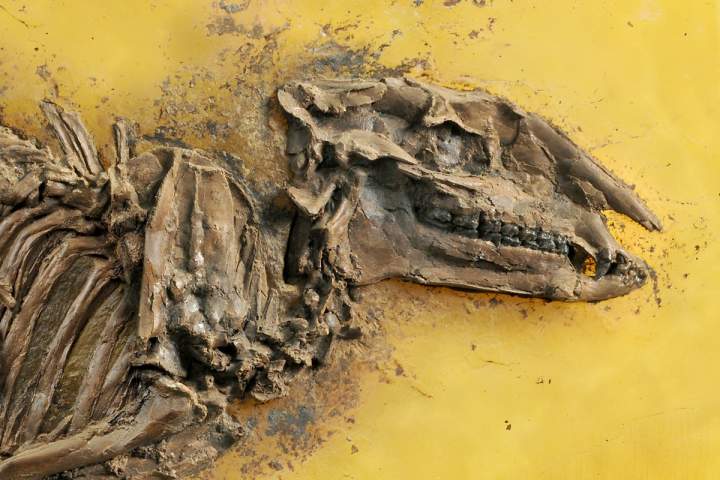
Eocene Radiation in Eurasia
Around the Paleocene–Eocene boundary, Earth underwent several rapid global warming events and, in their wake, mammals experienced a major turnover leading modern groups to become firmly established in all principal land ecosystems. They also reinvaded the seas and took to the sky, which is particularly well documented from the Messel Pit.
Messel is only one piece of the puzzle that is the world during the Eocene. Yet the exceptional quality of preservation of its fossils makes Messel one of the most important reference fossil sites for that era.
At least 44 species of mammals have been identified from Messel. Some have been described in details, so that we know quite a lot about their way of life. But for many others, our knowledge about their phylogenetic position, ecology, ontogeny or locomotion is still patchy. Such taxa are for instance Kopidodon, Leptictidium or Macrocranion. They are reinvestigated on the basis of new specimens and with the help of new technics (e.g., µCT scans). The study of their adaptations enables to reconstruct their ecological niche and to find their position in the faunal community. In turn, the study of the whole mammalian fauna can be undertaken (guild, competition, palaeoenvironment).
Competition at the Oligo-Miocene boundary in East Africa
An important moment in the Mammalian evolutionary history takes place in the Early Miocene of Africa. Two worlds are literally colliding (the endemic/archaic African Mammalian fauna meets the Eurasian immigrants), while at the same time and place the first hominoid Primates make their appearance and launch the long evolutionary journey of humankind.
The section works actively in Southwest Kenya on Rusinga Island (since 2008) and at Karungu (since 2013). Each year, thousands of new fossils are discovered, making these sites important comparative collections for the Early Miocene of Africa. This wealth of fossil records the faunal competition that took place there, and witnesses the set-up of the modern African fauna.
Besides running regular fieldwork and excavation, the section performs analyses of numerous Mammalian species. Through the study of the fauna (and in collaboration with geologists, palaeobotanists, geochimists, etc.), it is possible to reconstruct the palaeoenvironment, in which early hominoids emerged.
Inventory and Conservation of Biodiversity
Almost all modern Mammalian orders had representatives in the Eocene. But, further fossil orders, which have no living representatives, shared their environment. Such fantastic radiation produced many animals showing convergent adaptations. Over time, and certainly since the Miocene, competition drove many taxa to extinction and opened the way for the set-up of the modern Mammalian fauna.
The clade Afrotheria was deeply impacted by this, so that it now only represents 2% of the modern Mammalian species diversity, even though it embodies a third of its genetic biodiversity. More studies dealing with the evolutionary history of this clade, but also conservation initiative are therefore needed.
As IUCN Coordinator for Aardvark, the section is particularly involved in the regular assessment of the conservation status of this species (Orycteropus afer).
Among other projects, the section plans genetic studies and fieldwork in several regions of Africa to test for intraspecific and population variations.



